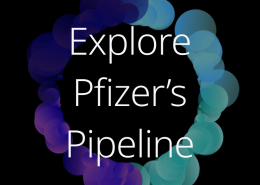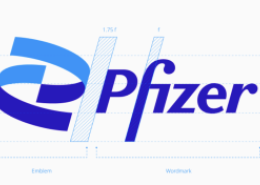FDA Accepts Supplemental New Drug Application for Pfizer’s IBRANCE® (palbociclib) in HR+, HER2- Metastatic Breast Cancer
sNDA includes data from Phase 3 PALOMA-2 trial to support conversion from accelerated approval to regular approval
“Since its introduction in 2015, more than 45,000 patients have been prescribed IBRANCE by more than 9,000 providers in the U.S.”
Pfizer Inc. (NYSE:PFE) today announced that the U.S. Food and Drug Administration (FDA) has accepted for review a supplemental New Drug Application (sNDA) for its first-in-class CDK 4/6 inhibitor, IBRANCE® (palbociclib). The sNDA supports the conversion of the accelerated approval of IBRANCE in combination with letrozole to regular approval and includes data from the Phase 3 PALOMA-2 trial, which evaluated IBRANCE as initial therapy in combination with letrozole for postmenopausal women with estrogen receptor-positive, human epidermal growth factor receptor 2-negative (ER+, HER2-) metastatic breast cancer. This is the same patient population as the randomized Phase 2 PALOMA-1 trial upon which the accelerated approval of IBRANCE plus letrozole was granted in February 2015.
The sNDA was granted Priority Review status, which accelerates FDA review time from 10 months to a goal of six months from the day of acceptance of filing.1 The Prescription Drug User Fee Act (PDUFA) goal date for a decision by the FDA is in April 2017.
“Since its introduction in 2015, more than 45,000 patients have been prescribed IBRANCE by more than 9,000 providers in the U.S.,” said Liz Barrett, global president and general manager, Pfizer Oncology. “We are pleased that the PALOMA-2 trial has further demonstrated the significant clinical benefit of IBRANCE in the first-line setting, providing additional evidence for its continued use as a standard of care medicine.”
PALOMA-2 is a randomized (2:1), multicenter, double-blind Phase 3 study that evaluated a total of 666 women from 186 global sites in 17 countries. The results of PALOMA-2 were presented at the 52nd American Society of Clinical Oncology (ASCO) Annual Meeting in June and recently published in the November 17, 2016 issue of The New England Journal of Medicine. The study demonstrated that IBRANCE in combination with letrozole improved progression-free survival compared to letrozole plus placebo as a first-line treatment for postmenopausal women with ER+, HER2- metastatic breast cancer. The adverse events observed with IBRANCE in combination with letrozole in PALOMA-2 were generally consistent with their respective known adverse event profiles.
About IBRANCE® (palbociclib) 125 mg capsules
IBRANCE is the first and only FDA approved oral inhibitor of CDKs 4 and 6,2 which are key regulators of the cell cycle that trigger cellular progression.3,4 IBRANCE is approved in more than 50 countries.
In the U.S., IBRANCE is indicated for the treatment of HR+, HER2- advanced or metastatic breast cancer in combination with letrozole as initial endocrine based therapy in postmenopausal women, or fulvestrant in women with disease progression following endocrine therapy.2 The indication in combination with letrozole is approved under accelerated approval based on PFS. Continued approval for this indication may be contingent upon verification and description of clinical benefit in a confirmatory trial.
The full prescribing information for IBRANCE can be found at www.pfizer.com.
IMPORTANT IBRANCE® (palbociclib) SAFETY INFORMATION FROM THE U.S. PRESCRIBING INFORMATION
Neutropenia was the most frequently reported adverse reaction in PALOMA-1 (75%) and PALOMA-3 (83%). In PALOMA-1, Grade 3 (57%) or 4 (5%) decreased neutrophil counts were reported in patients receiving IBRANCE plus letrozole. In PALOMA-3, Grade 3 (56%) or Grade 4 (11%) decreased neutrophil counts were reported in patients receiving IBRANCE plus fulvestrant. Febrile neutropenia has been reported in about 1% of patients exposed to IBRANCE. One death due to neutropenic sepsis was observed in PALOMA-3. Inform patients to promptly report any fever.
Monitor complete blood count prior to starting IBRANCE, at the beginning of each cycle, on Day 14 of first 2 cycles, and as clinically indicated. Dose interruption, dose reduction, or delay in starting treatment cycles is recommended for patients who develop Grade 3 or 4 neutropenia.
Pulmonary embolism (PE) has been reported at a higher rate in patients treated with IBRANCE plus letrozole in PALOMA-1 (5%) and in patients treated with IBRANCE plus fulvestrant in PALOMA-3 (1%) compared with no cases in patients treated either with letrozole alone or fulvestrant plus placebo. Monitor for signs and symptoms of PE and treat as medically appropriate.
Based on the mechanism of action, IBRANCE can cause fetal harm. Advise females of reproductive potential to use effective contraception during IBRANCE treatment and for at least 3 weeks after the last dose. IBRANCE may impair fertility in males and has the potential to cause genotoxicity. Advise male patients with female partners of reproductive potential to use effective contraception during IBRANCE treatment and for 3 months after the last dose. Advise females to inform their healthcare provider of a known or suspected pregnancy. Advise women not to breastfeed during IBRANCE treatment and for 3 weeks after the last dose because of the potential for serious adverse reactions in nursing infants.
The most common adverse reactions(≥10%) of any grade reported in PALOMA-1 of IBRANCE plus letrozole vs letrozole alone included neutropenia (75% vs 5%), leukopenia (43% vs 3%), fatigue (41% vs 23%), anemia (35% vs 7%), upper respiratory infection (31% vs 18%), nausea (25% vs 13%), stomatitis (25% vs 7%), alopecia (22% vs 3%), diarrhea (21% vs 10%), thrombocytopenia (17% vs 1%), decreased appetite (16% vs 7%), vomiting (15% vs 4%), asthenia (13% vs 4%), peripheral neuropathy (13% vs 5%), and epistaxis (11% vs 1%).
Grade 3/4 adverse reactions (≥10%) in PALOMA-1 reported at a higher incidence in the IBRANCE plus letrozole group vs the letrozole alone group included neutropenia (54% vs 1%) and leukopenia (19% vs 0%). The most frequently reported serious adverse events in patients receiving IBRANCE plus letrozole were pulmonary embolism (4%) and diarrhea (2%).
Lab abnormalities occurring in PALOMA-1 (all grades, IBRANCE plus letrozole vs letrozole alone) were decreased WBC (95% vs 26%), decreased neutrophils (94% vs 17%), decreased lymphocytes (81% vs 35%), decreased hemoglobin (83% vs 40%), and decreased platelets (61% vs 16%).
The most common adverse reactions (≥10%) of any grade reported in PALOMA-3 of IBRANCE plus fulvestrant vs fulvestrant plus placebo included neutropenia (83% vs 4%), leukopenia (53% vs 5%), infections (47% vs 31%), fatigue (41% vs 29%), nausea (34% vs 28%), anemia (30% vs 13%), stomatitis (28% vs 13%), headache (26% vs 20%), diarrhea (24% vs 19%), thrombocytopenia (23% vs 0%), constipation (20% vs 16%), vomiting (19% vs 15%), alopecia (18% vs 6%), rash (17% vs 6%), decreased appetite (16% vs 8%), and pyrexia (13% vs 5%).
Grade 3/4 adverse reactions (≥10%) in PALOMA-3 reported at a higher incidence in the IBRANCE plus fulvestrant group vs the fulvestrant plus placebo group included neutropenia (66% vs 1%) and leukopenia (31% vs 2%). The most frequently reported serious adverse reactions in patients receiving IBRANCE plus fulvestrant were infections (3%), pyrexia (1%), neutropenia (1%), and pulmonary embolism (1%).
Lab abnormalities occurring in PALOMA-3 (all grades, IBRANCE plus fulvestrant vs fulvestrant plus placebo) were decreased WBC (99% vs 26%), decreased neutrophils (96% vs 14%), anemia (78% vs 40%), and decreased platelets (62% vs 10%).
Avoid concurrent use of strong CYP3A inhibitors. If patients must be administered a strong CYP3A inhibitor, reduce the IBRANCE dose to 75 mg/day. If the strong inhibitor is discontinued, increase the IBRANCE dose (after 3-5 half-lives of the inhibitor) to the dose used prior to the initiation of the strong CYP3A inhibitor. Grapefruit or grapefruit juice may increase plasma concentrations of IBRANCE and should be avoided. Avoid concomitant use of strong CYP3A inducers. The dose of sensitive CYP3A substrates with a narrow therapeutic index may need to be reduced as IBRANCE may increase their exposure.
IBRANCE has not been studied in patients with moderate to severe hepatic impairment or in patients with severe renal impairment (CrCl <30 mL/min).
About Pfizer Oncology
Pfizer Oncology is committed to pursuing innovative treatments that have a meaningful impact on those living with cancer. As a leader in oncology speeding cures and accessible breakthrough medicines to patients, Pfizer Oncology is helping to redefine life with cancer. Our strong pipeline of biologics, small molecules and immunotherapies, one of the most robust in the industry, is studied with precise focus on identifying and translating the best scientific breakthroughs into clinical application for patients across a wide range of cancers. By working collaboratively with academic institutions, individual researchers, cooperative research groups, governments and licensing partners, Pfizer Oncology strives to cure or control cancer with its breakthrough medicines. Because Pfizer Oncology knows that success in oncology is not measured solely by the medicines you manufacture, but rather by the meaningful partnerships you make to have a more positive impact on people’s lives.
Working together for a healthier world®
At Pfizer, we apply science and our global resources to bring therapies to people that extend and significantly improve their lives. We strive to set the standard for quality, safety and value in the discovery, development and manufacture of health care products. Our global portfolio includes medicines and vaccines as well as many of the world's best-known consumer health care products. Every day, Pfizer colleagues work across developed and emerging markets to advance wellness, prevention, treatments and cures that challenge the most feared diseases of our time. Consistent with our responsibility as one of the world's premier innovative biopharmaceutical companies, we collaborate with health care providers, governments and local communities to support and expand access to reliable, affordable health care around the world. For more than 150 years, we have worked to make a difference for all who rely on us. We routinely post information that may be important to investors on our website at www.pfizer.com. In addition, to learn more, please visit us on www.pfizer.com and follow us on Twitter at @Pfizer and @PfizerNews, LinkedIn, YouTube and like us on Facebook at Facebook.com/Pfizer.
DISCLOSURE NOTICE: The information contained in this release is as of December 21, 2016. Pfizer assumes no obligation to update forward-looking statements contained in this release as the result of new information or future events or developments.
This release contains forward-looking information about IBRANCE (palbociclib), including its potential benefits, that involves substantial risks and uncertainties that could cause actual results to differ materially from those expressed or implied by such statements. Risks and uncertainties include, among other things, uncertainties regarding the commercial success of IBRANCE; the uncertainties inherent in research and development, including further investigation of the clinical benefit of IBRANCE, the ability to meet anticipated clinical trial commencement and completion dates and regulatory submission dates, as well as the possibility of unfavorable clinical trial results, including unfavorable new clinical data and additional analyses of existing clinical data; whether regulatory authorities will be satisfied with the design of and results from our clinical studies; whether and when the sNDA will be approved and whether and when the accelerated approval for IBRANCE will be converted to regular approval in the U.S.; whether and when drug applications may be filed in any additional jurisdictions for IBRANCE for potential HR+/HER2- metastatic breast cancer indications or in any jurisdictions for any other potential indications for IBRANCE; whether and when any such other applications may be approved by regulatory authorities, which will depend on the assessment by such regulatory authorities of the benefit-risk profile suggested by the totality of the efficacy and safety information submitted; decisions by regulatory authorities regarding labeling and other matters that could affect the availability or commercial potential of IBRANCE; and competitive developments.
A further description of risks and uncertainties can be found in Pfizer’s Annual Report on Form 10-K for the fiscal year ended December 31, 2015 and in its subsequent reports on Form 10-Q, including in the sections thereof captioned “Risk Factors” and “Forward-Looking Information and Factors That May Affect Future Results,” as well as in its subsequent reports on Form 8-K, all of which are filed with the U.S. Securities and Exchange Commission and available at www.sec.gov and www.pfizer.com.
1 U.S. Food and Drug Administration. Priority Review. http://www.fda.gov/forpatients/approvals/fast/ucm405405.htm. Accessed November 11, 2016..
2 IBRANCE® (palbociclib) Prescribing Information. New York. NY: Pfizer Inc: 2016.
3 Weinberg RA. pRb and Control of the Cell Cycle Clock. In: Weinberg RA, ed. The Biology of Cancer. 2nd ed. New York, NY: Garland Science; 2014:275-329.
4 Sotillo E, Grana X. Escape from Cellular Quiescence. In: Enders GH, ed. Cell Cycle Deregulation in Cancer. New York, NY: Humana Press; 2010:3-22.
Pfizer Inc.
Media:
Sally Beatty (US), (212) 733-6566
or
Investor:
Ryan Crowe, (212) 733-8160








